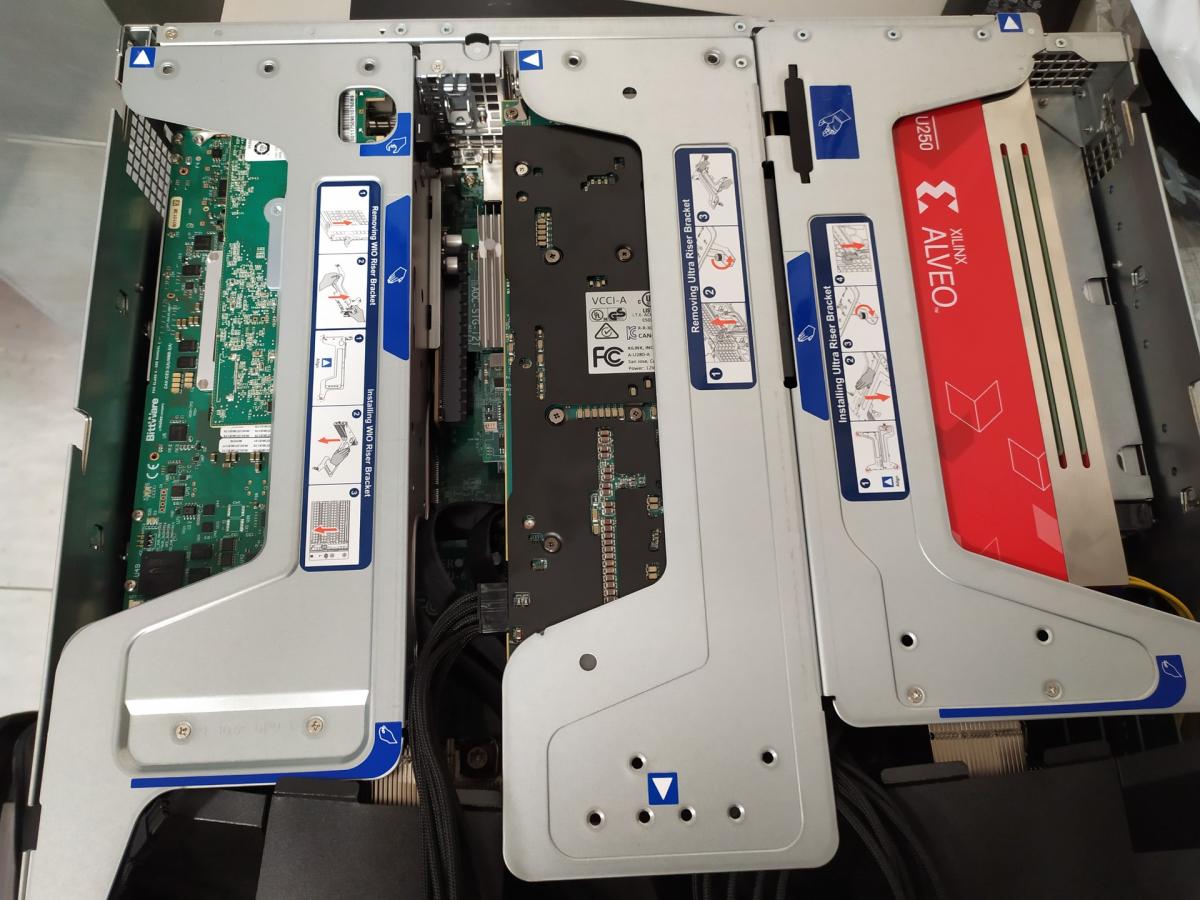FPGA testbed
The Field Programmable Gate Array (FPGA) testbed provides access to a variety of reconfigurable computing technologies.

Technology
# Nodes
4 compute nodes
FPGAs
- AMD Xilinx Alveo U280 with 1 million LUTs, 8GB HBM2 and 32GB DDR-DRAM.
- AMD Xilinx Alveo U250 with 1.3 million LUTs, 64GB DDR-DRAM
- AMD Xilinx VCK5000 with Versal FPGA containing 400 AI-engines and on-board 32GB DDR-DRAM
- Alpha Data ADM PA-100 which provides Versal FPGA containing 400 AI-engines
- Bittware 520N-MX, containing Intel Stratix-10 FPGA and 16GB HBM2
Storage technologies and specs
Access to the NEXTGenIO system which has a 217TB lustre file system.
Interconnect technologies and specs
Dual-rail Intel Omnipath at 100 Gbit/s between the nodes.
QSFP28 100Gbit/s direct connection between the FPGA cards via QSFP28 router.
Layout/Physical system scale
The system is housed in the NextGenIO racks.
Cooling tech and specs
The system is composed of 4 air-cooled servers, housed in air-cooled racks.
Scheduler details
Slurm
System OS Details
CentOS 7
Science and applications
The FPGA testbed is funded by ExCALIBUR H&ES programme and intended to give HPC code developers access to a variety of FPGA technologies that they can use to experiment accelerating their codes. Some examples of successes:
- Stencil-HMLS: A multi-layered approach to the automatic optimisation of stencil codes on FPGA
- Fortran High-Level Synthesis: Reducing the barriers to accelerating HPC codes on FPGAs
- Exploring the Versal AI Engines for Accelerating Stencil-based Atmospheric Advection Simulation
Access
If you are interested in using the FPGA testbed prototype for your research, please see https://fpga.epcc.ed.ac.uk/ for details of how to gain access.
People
The FPGA testbed system is managed by Adrian Jackson and Nick Brown at EPCC.
